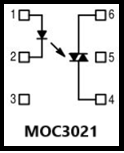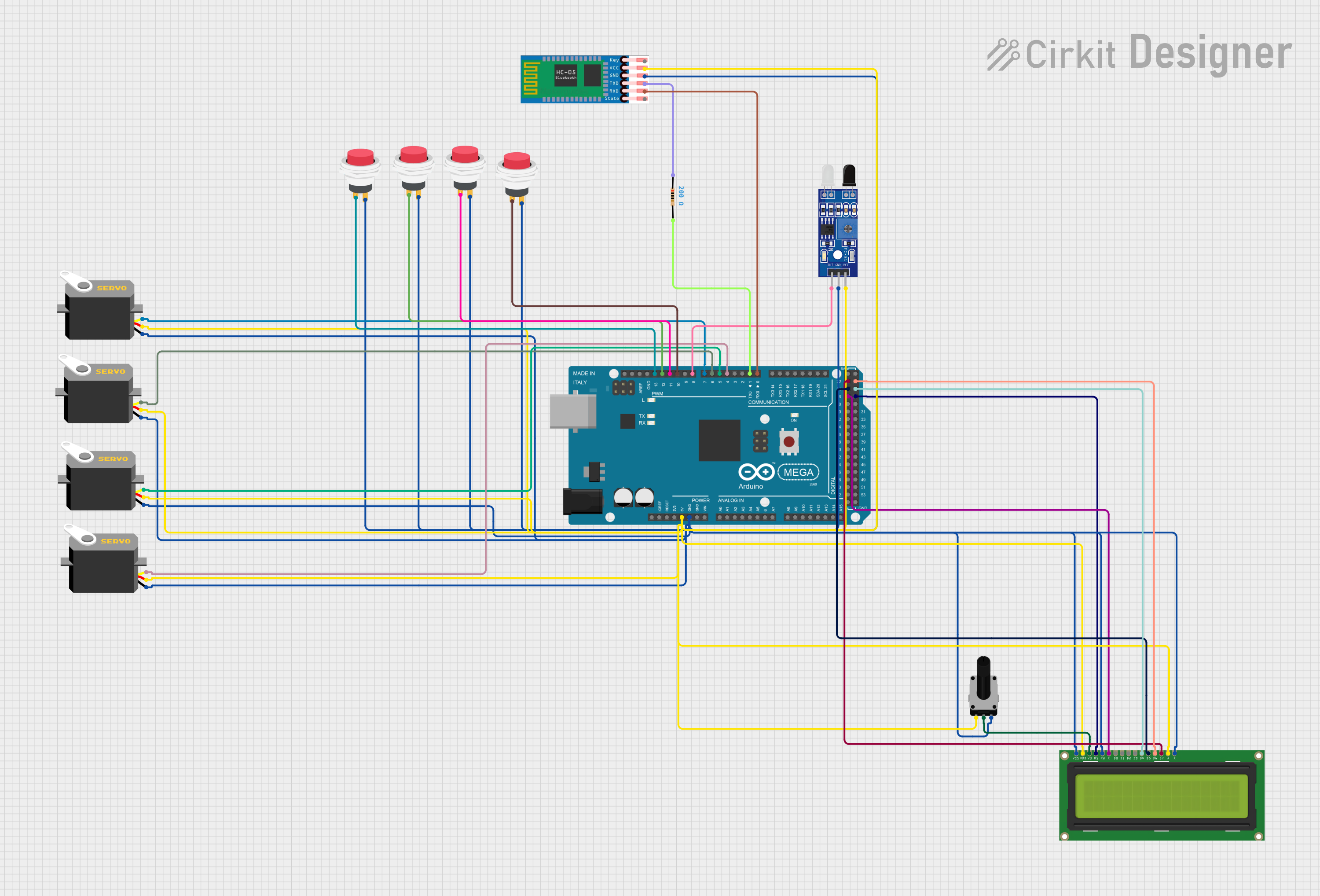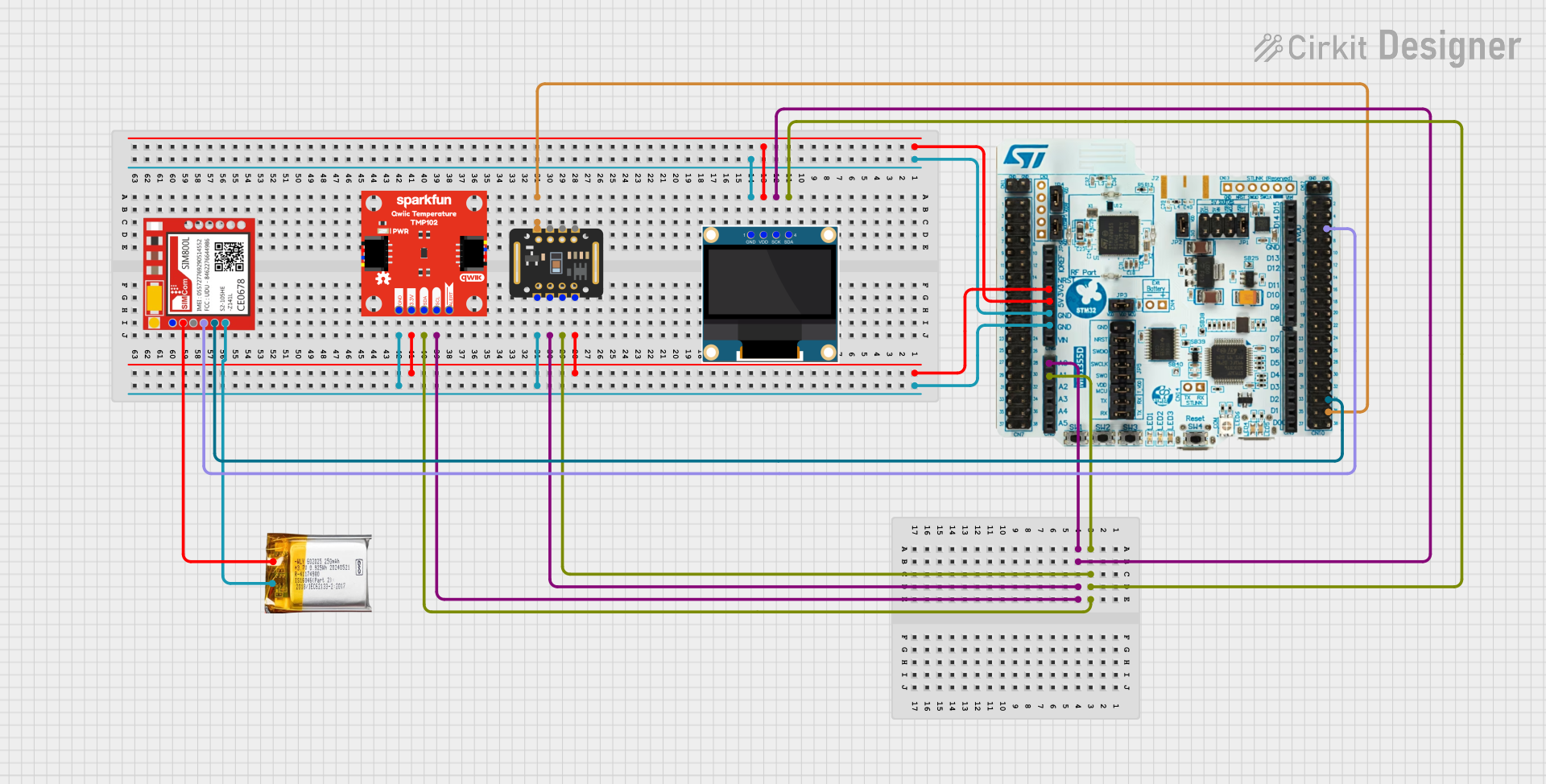
How to Use moc3021: Examples, Pinouts, and Specs

 Design with moc3021 in Cirkit Designer
Design with moc3021 in Cirkit DesignerIntroduction
The MOC3021 is an optoisolator designed to provide electrical isolation between its input and output. It consists of an infrared light-emitting diode (LED) on the input side and a phototransistor on the output side. This configuration allows the MOC3021 to transfer signals between two electrically isolated circuits, making it ideal for controlling high-voltage circuits using low-voltage signals.
Explore Projects Built with moc3021

 Open Project in Cirkit Designer
Open Project in Cirkit Designer
 Open Project in Cirkit Designer
Open Project in Cirkit Designer
 Open Project in Cirkit Designer
Open Project in Cirkit Designer
 Open Project in Cirkit Designer
Open Project in Cirkit DesignerExplore Projects Built with moc3021

 Open Project in Cirkit Designer
Open Project in Cirkit Designer
 Open Project in Cirkit Designer
Open Project in Cirkit Designer
 Open Project in Cirkit Designer
Open Project in Cirkit Designer
 Open Project in Cirkit Designer
Open Project in Cirkit DesignerCommon Applications and Use Cases
- AC and DC motor control
- Signal isolation in microcontroller-based systems
- Triac triggering for AC loads
- Industrial automation and control systems
- Protection of sensitive low-voltage circuits from high-voltage transients
Technical Specifications
The MOC3021 is a robust and versatile component. Below are its key technical details:
| Parameter | Value |
|---|---|
| Input LED Forward Voltage | 1.2V (typical), 1.5V (maximum) |
| Input LED Forward Current | 10mA (typical), 60mA (maximum) |
| Output Voltage (VCEO) | 400V (maximum) |
| Isolation Voltage | 5000Vrms |
| Trigger LED Current (IFT) | 15mA (maximum) |
| Output Current (IO) | 100mA (maximum) |
| Operating Temperature Range | -40°C to +100°C |
| Package Type | 6-pin DIP |
Pin Configuration and Descriptions
The MOC3021 is housed in a 6-pin DIP package. The pinout is as follows:
| Pin Number | Name | Description |
|---|---|---|
| 1 | Anode | Positive terminal of the input LED. Connect to the control signal. |
| 2 | Cathode | Negative terminal of the input LED. Connect to ground or a current-limiting resistor. |
| 3 | NC (No Connect) | Not connected internally. Leave unconnected. |
| 4 | Emitter | Emitter of the phototransistor. Connect to the load or ground. |
| 5 | Collector | Collector of the phototransistor. Connect to the high-voltage side of the circuit. |
| 6 | NC (No Connect) | Not connected internally. Leave unconnected. |
Usage Instructions
The MOC3021 is commonly used to trigger a triac for AC load control or to isolate signals between two circuits. Below are the steps and considerations for using the MOC3021 in a circuit:
Basic Circuit Design
Input Side (LED):
- Connect the anode (Pin 1) to the control signal through a current-limiting resistor.
- Connect the cathode (Pin 2) to ground.
- Calculate the resistor value using Ohm's Law:
[ R = \frac{V_{in} - V_f}{I_f} ]
Where (V_{in}) is the input voltage, (V_f) is the forward voltage of the LED (1.2V typical), and (I_f) is the desired forward current (10mA typical).
Output Side (Phototransistor):
- Connect the collector (Pin 5) to the high-voltage side of the circuit.
- Connect the emitter (Pin 4) to the load or ground, depending on the application.
Example: Triac Triggering Circuit
The MOC3021 is often used to trigger a triac for controlling AC loads. Below is an example circuit:
- Input: Microcontroller GPIO pin
- Output: Triac controlling an AC load
Arduino Example Code
The following code demonstrates how to use the MOC3021 with an Arduino UNO to control an AC load:
// Define the pin connected to the MOC3021 input
const int moc3021Pin = 9;
void setup() {
pinMode(moc3021Pin, OUTPUT); // Set the pin as an output
}
void loop() {
digitalWrite(moc3021Pin, HIGH); // Turn on the AC load
delay(1000); // Keep it on for 1 second
digitalWrite(moc3021Pin, LOW); // Turn off the AC load
delay(1000); // Keep it off for 1 second
}
Important Considerations
- Always use a current-limiting resistor on the input side to prevent damage to the LED.
- Ensure proper heat dissipation if the MOC3021 is used near its maximum current ratings.
- For AC load control, use a snubber circuit across the triac to suppress voltage spikes.
Troubleshooting and FAQs
Common Issues
No Output Signal:
- Check if the input LED is receiving sufficient current. Verify the resistor value.
- Ensure the input control signal is within the required voltage range.
Erratic Behavior in AC Load Control:
- Verify the triac and snubber circuit connections.
- Check for noise or interference in the control signal.
Component Overheating:
- Ensure the current on both the input and output sides does not exceed the maximum ratings.
- Use proper heat sinks or cooling mechanisms if necessary.
FAQs
Q: Can the MOC3021 be used for DC load control?
A: Yes, the MOC3021 can be used for DC load control, but it is more commonly used for AC load control due to its ability to trigger triacs.
Q: What is the purpose of the isolation voltage rating?
A: The isolation voltage rating (5000Vrms) indicates the maximum voltage the MOC3021 can withstand between its input and output without electrical breakdown, ensuring safe isolation.
Q: Can I use the MOC3021 directly with a microcontroller?
A: Yes, the MOC3021 can be directly interfaced with a microcontroller, provided a suitable current-limiting resistor is used on the input side.
By following the guidelines and best practices outlined in this documentation, you can effectively use the MOC3021 in your electronic projects.